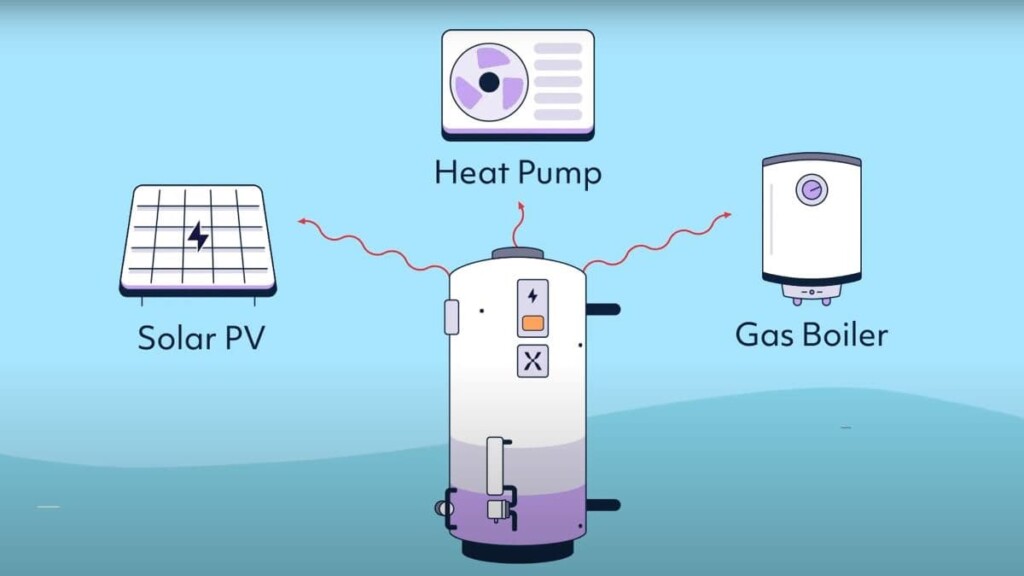
Homeowner Guide Choosing the right cylinder for you
There are a few key things to think about when choosing the right cylinder for your home. We’ve put together this homeowner guide to help you ask the right questions to your Installer, who will help you pick the best option, and maximise your energy savings.
Not sure where to start? No problem. A Mixergy Expert can help you find and fit the perfect cylinder for your needs.
How does Mixergy work?
Smart Engineering
Mixergy cylinders are unlike any other. Whether you’re using solar PV, direct electric, or gas, our innovative technology heats only the water your home actually needs—nothing more, nothing wasted. Thanks to our patented top-down heating design, you have complete control over how much hot water you use, maximising efficiency and savings.
For heat pumps, our externally mounted plate heat exchanger enhances system performance, improving overall efficiency.
Watch the video to learn more.

Your home
Your heating source, how we save and how to choose
What’s the difference with iHP X, Mixergy X and Solar X?
How much can I save?
What are my options for solar PV?
Can I connect to a heat pump?
Do Mixergy cylinders work with Smart Energy Tariffs?
Installation requirements
What to consider for your installation
Who can install one?
What space requirements do I need?
Do I need the internet for the cylinders to work?
After care
Built to last and our commitments to you
What is the Warranty?
Does Mixergy offer a service plan?
Find an Expert
Mixergy Experts
If you want a Mixergy cylinder installed or need help to find the right product and solution for your home, use our Expert Finder. Simply enter your postcode and you will be shown Mixergy Experts in your area.
Our Mixergy Experts are required to provide a valid a G3 qualification and proof of insurance. While Mixergy Experts are not employed or engaged as contractors by Mixergy, they are provided with training on installation and maintenance of our products.


